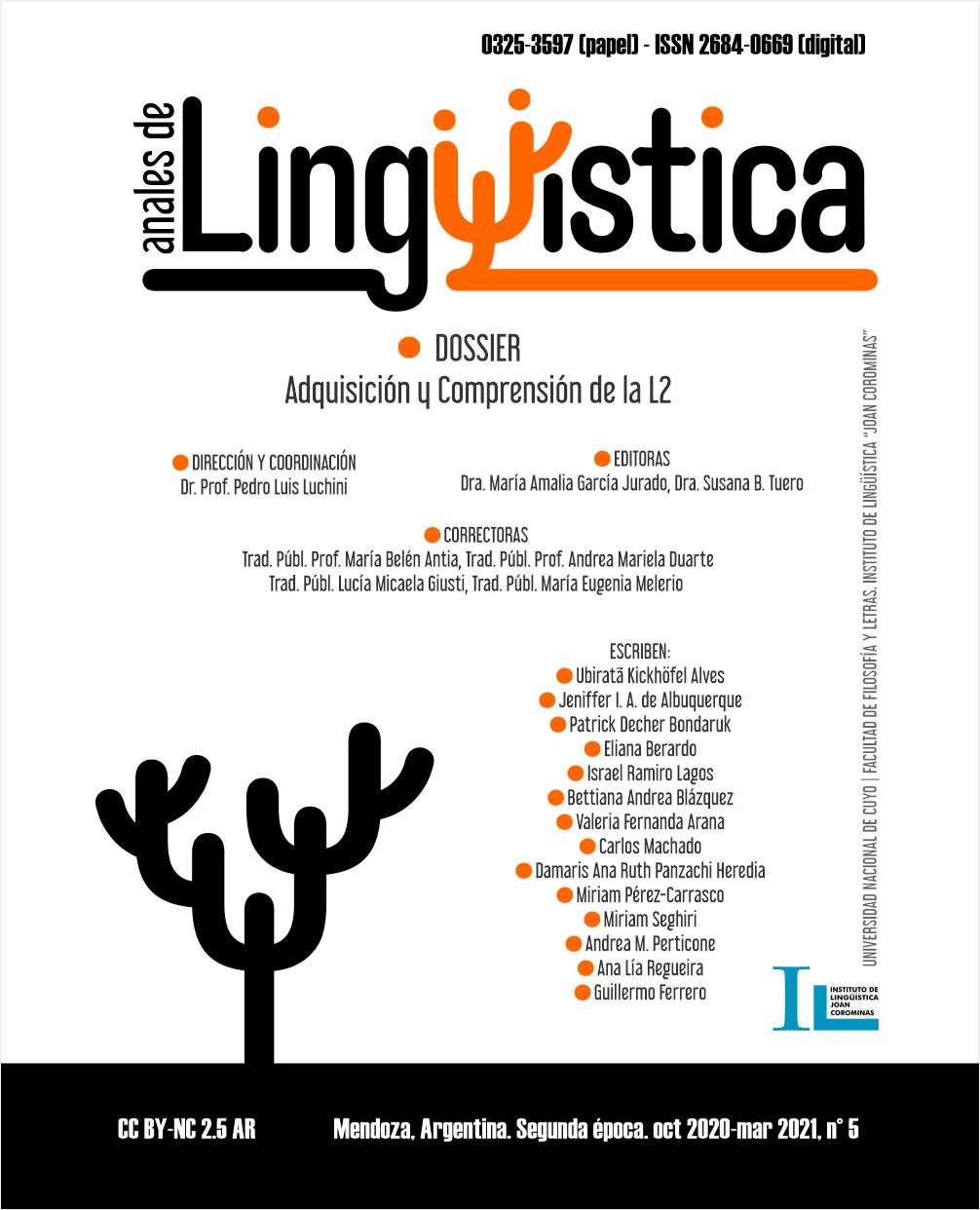Efectos de la repetición de tareas: redistribuir los recursos atencionales para optimizar la producción
Palabras clave:
repetición de tareas, recursos atencionales, oralidad, narraciónResumen
En el área de enseñanza de inglés como lengua extranjera existe desde hace décadas una creciente tendencia general a usar métodos de enseñanza basados en la comunicación. Asimismo, los diseños curriculares vigentes en la Argentina proponen adoptar la enseñanza por proyectos. En este marco, crece la necesidad de respuestas sobre los beneficios concretos de utilizar un enfoque de enseñanza por tareas (task-based learning) en relación con el proceso de adquisición de la lengua. Uno de los temas sobre los que se ha investigado en los últimos años es el efecto de la repetición de tareas en el desarrollo lingüístico de los estudiantes de lenguas extranjeras, sobre todo teniendo en cuenta que entran en juego procesos cognitivos complejos involucrados en la producción escrita y oral.
El presente estudio tiene como objetivos analizar el efecto de la repetición de tareas de narración oral en la distribución de la atención entre los distintos procedimientos, tomando como guía el modelo de la producción oral de Levelt (2012), y relacionar los cambios en la distribución mencionada con los cambios en la calidad de las producciones orales de los participantes. Se utilizaron métodos cuantitativos para analizar estas producciones y se midieron la fluidez, precisión, complejidad léxica y complejidad sintáctica. Al finalizar cada tarea, se realizó una entrevista sobre el análisis del desempeño en la tarea para observar el porcentaje de atención en cada parte del proceso de producción. Si bien los resultados no son concluyentes, arrojan datos que coinciden con estudios anteriores.
Citas
Foster, P., Tonkyn, A. y Wigglesworth, G. (2000). Measuring spoken discourse: A unit for all reasons. Applied Linguistics, 21 (3), 354-375.
Fukuta, J. (2016). Effects of task repetition on learners’ attention orientation in L2 oral production. Language Teaching Research, 20 (3), 321-340. https://doi.org/10.1177/1362168815570142
Gass, S. (2017). Input, Interaction, and the Second Language Learner (2.a ed.). Nueva York: Routledge.
Kormos, J. y Dénes, M. (2004). Exploring measures and perceptions of fluency in the speech of second language learners. System, 32 (2), 145-164. https://doi.org/10.1016/j.system.2004.01.001
Levelt, W. J. M. (2012). Producing spoken language: a blueprint of the speaker. En C. M. Brown y P. Hagoort (Eds.). The Neurocognition of Language (pp. 82-122). Oxford: Oxford University Press. https://doi.org/10.1093/acprof:oso/9780198507932.003.0004
Nazara, S. (2011). Students’ Perception on EFL Speaking Skill Development. JET (Journal of English Teaching), 1 (1), 28. https://doi.org/10.33541/jet.v1i1.50
Tavakoli, P. y Foster, P. (2008). Task design and second language performance: The effect of narrative type on learner output. Language Learning, 58 (2), 439-473. https://doi.org/10.1111/j.1467-9922.2008.00446.x
Yu, Y. (2015). The Effect of Task Frequency on EFL Speaking Ability Acquisition. Theory and Practice in Language Studies, 5 (2), 392. https://doi.org/10.17507/tpls.0502.21
Descargas
Publicado
Cómo citar
Número
Sección
Licencia
Derechos de autor 2021 Anales de Lingüística
Esta obra está bajo una Licencia Creative Commons Atribución 2.5 Argentina.
Los/as autores/as que publican en esta revista están de acuerdo con los siguientes términos:
1. Los/as autores conservan los derechos de autor y garantizan a la revista el derecho de ser la primera publicación del trabajo bajo una licecncia Creative Commons Atribución 2.5 Argentina (CC BY 2.5 AR) . Por esto pueden compartir el trabajo con la referencia explícita de la publicación original en esta revista.
2. Anales de lingüística permite y anima a los autores a difundir la publicación realizada electrónicamente, a través de su enlace y/o de la versión postprint del archivo descargado de forma independiente.
3. Usted es libre de:
Compartir — copiar y redistribuir el material en cualquier medio o formato
Adaptar — remezclar, transformar y construir a partir del material para cualquier propósito, incluso comercialmente.























